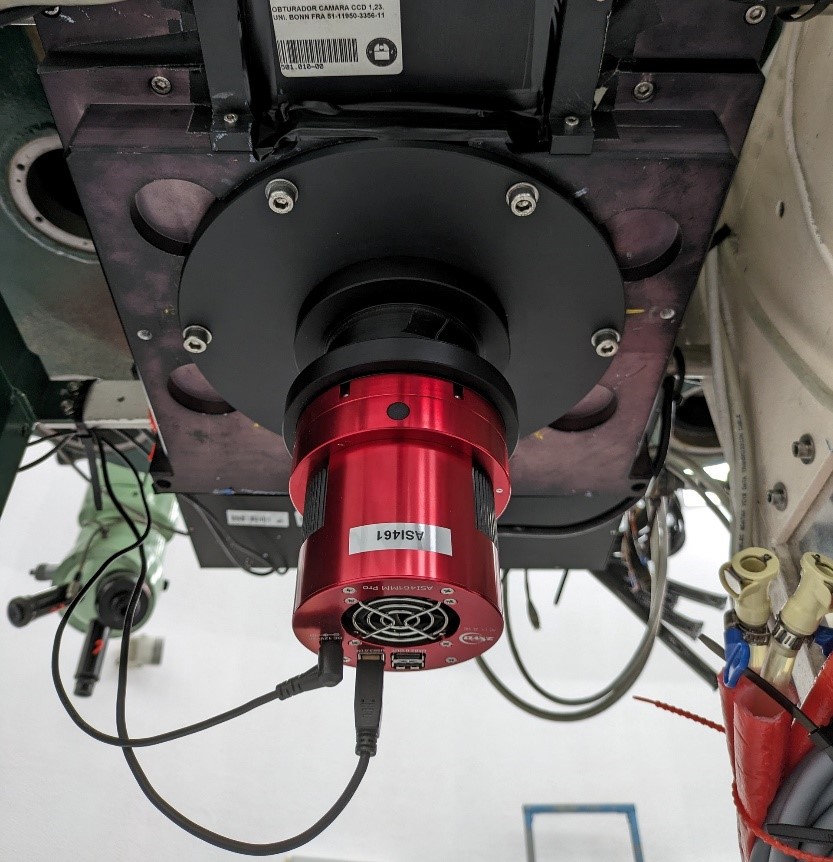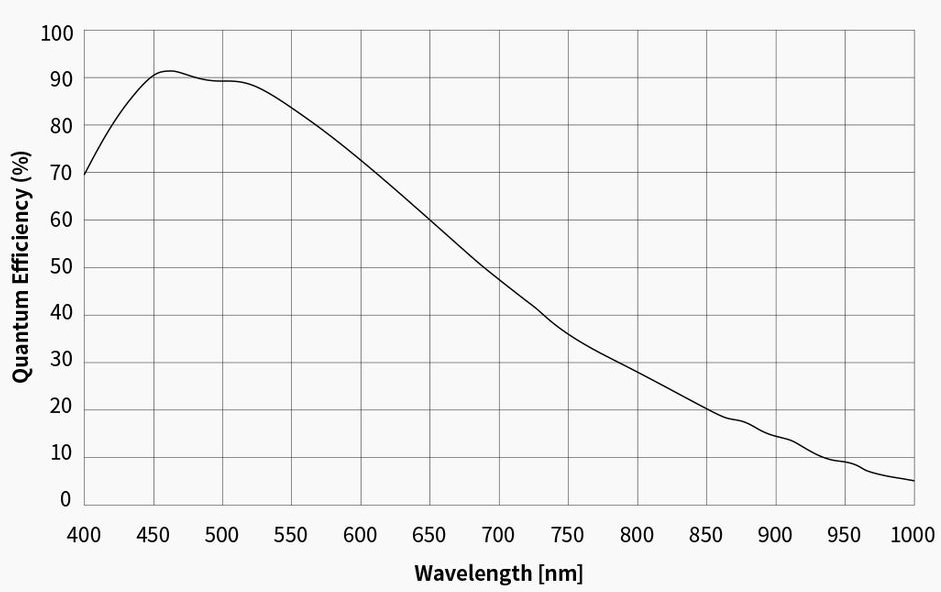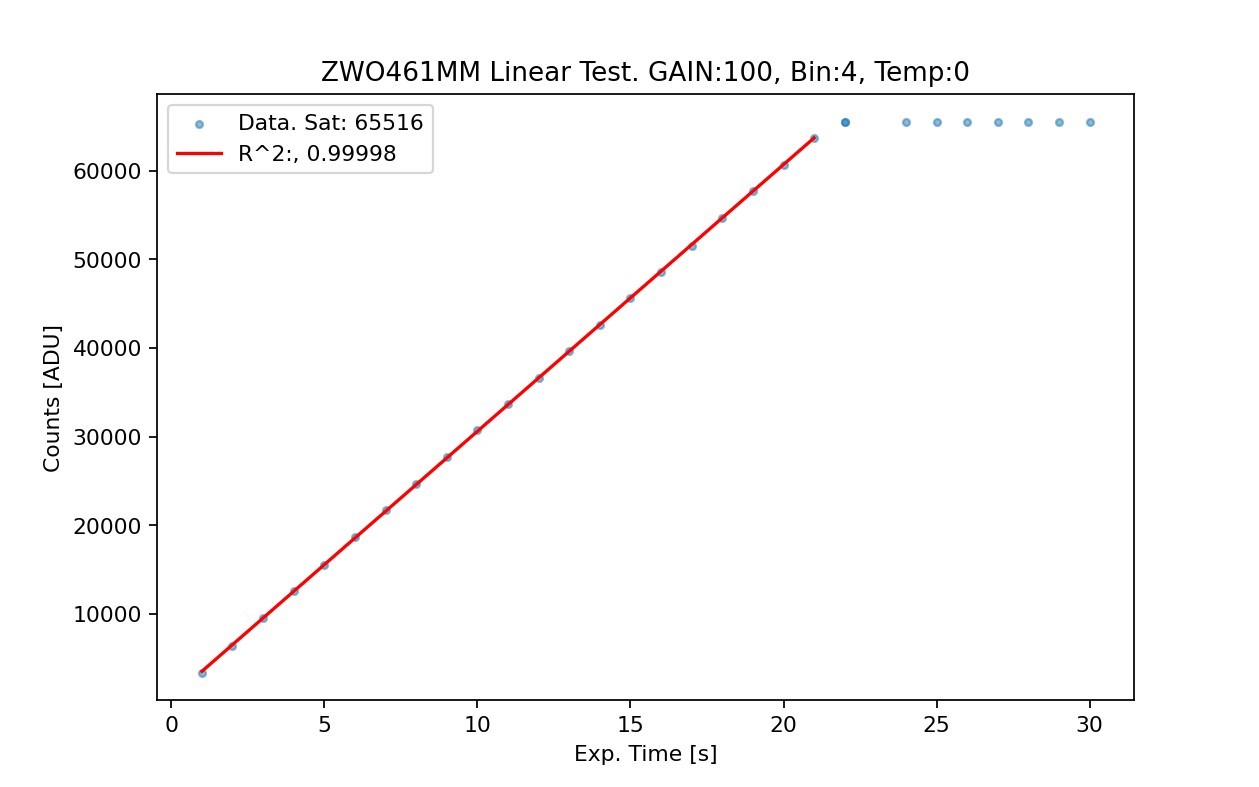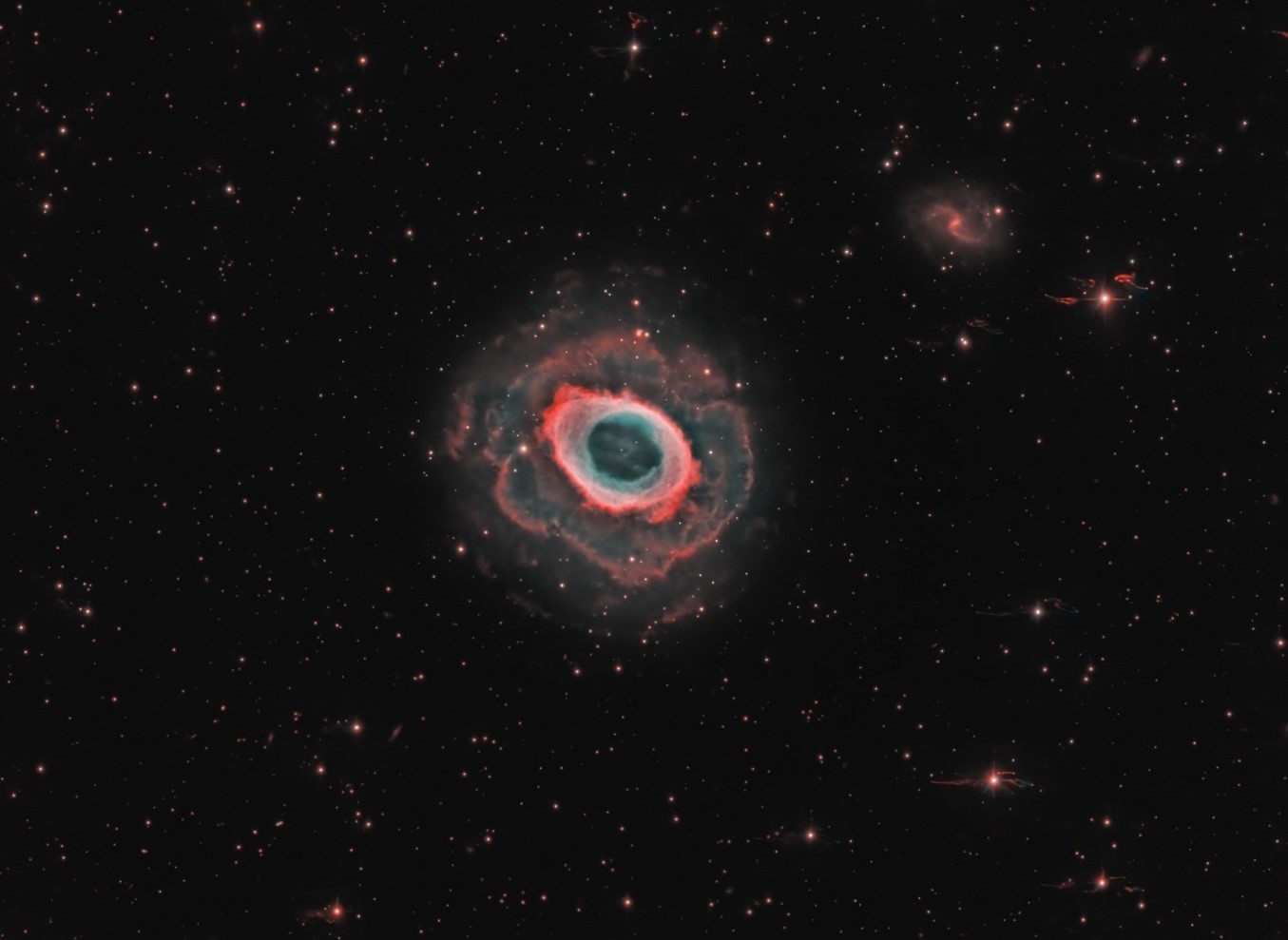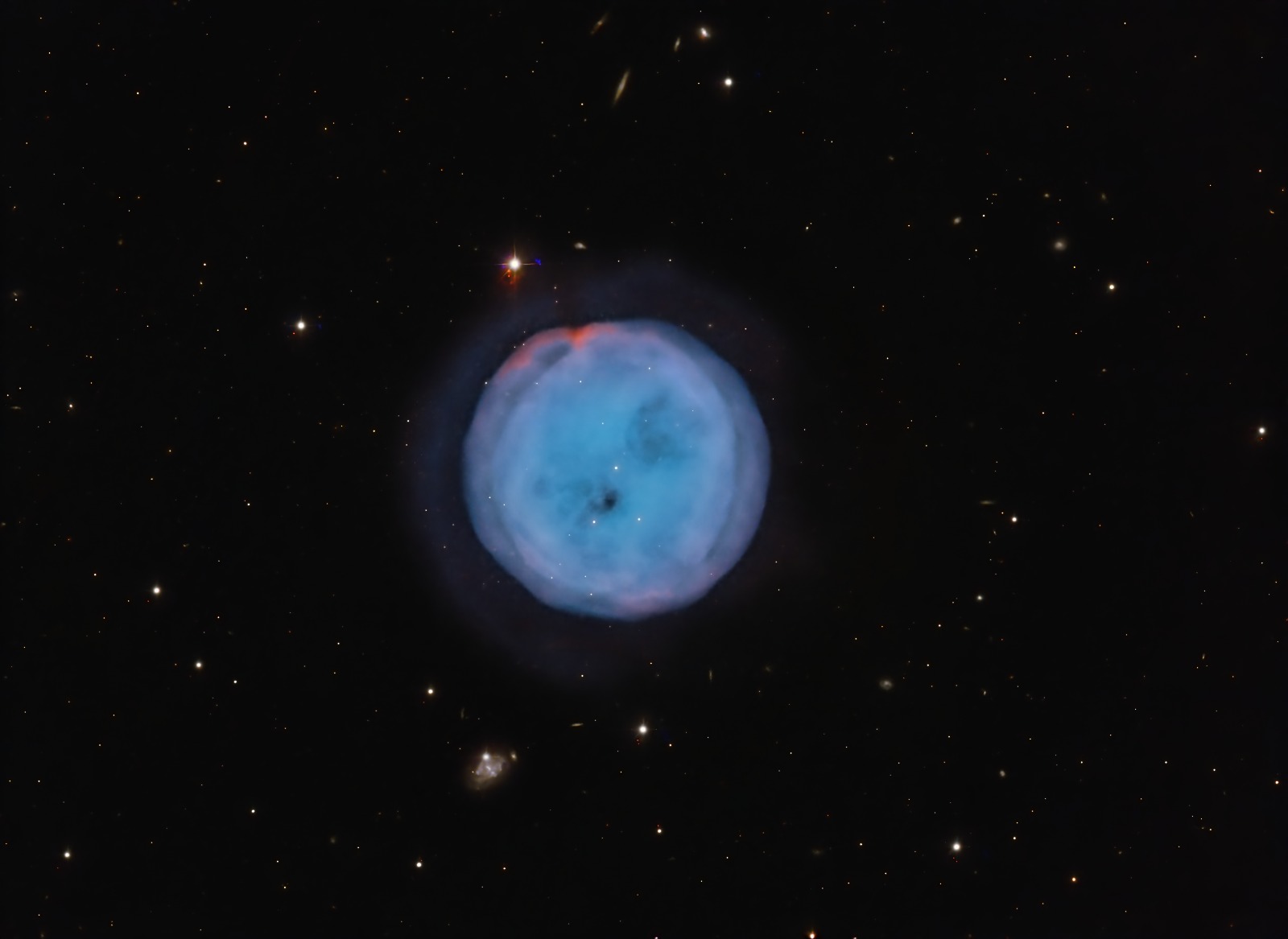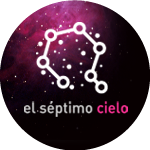CMOS camera
To perform fast photometry or to take deep images on a ~ 180 sq. arcmin field of view, the 1.23 m telescope is equipped with a commercial camera based on a medium format, monochromatic CMOS (Complementary Metal-Oxide-Semiconductor) sensor, the ASI461MM Pro model from ZWO.
In a nutshell
Instrument name: ASI461MM Pro
Observing technique: Direct imaging camera, fast photometry
Sensor: CMOS Sony IMX461ALR, back illuminated, 16 bits ADC
Physical size: 44 x 33 mm
Resolution: 11656 x 8750 active pixels (nearly 102 Mpix)
Pixels size: 3.76 μm (scale = 0.08” per unbinned pixel)
Recommended binning: software 4x4 (one "superpixel" = 0.314" on the sky). See note.
Field of view: 15.3 x 11.5 arcmin
Quantum efficiency: > 70% (91% peak at 460 nm) between 400 to 610 nm, see QE curve.
Linearity: Excellent up to the 16-bit saturation limit of 65 kADU (Javier Flores, priv. comm., see dome flat field lamp counts).
Full well capacity: 50 ke at gain = 0 (198 ke with 2x2 binning), 18 ke at gain = 100
Read-out noise: 3.3 e- at gain = 0, < 1.5 e- for gain ≥ 100 (HCG mode)
Shutter: Electronic rolling shutter
Exposure time: from min. 20 μm to max. 2000 s
Cadency: Nearly 9 frames per sec (FPS) full frame with hardware binning 3x3 thanks to the DDR3 256MB buffer. And over 100 to 200 FPS in small windows with hardware binning 3x3. See FPS measurements for other windowing / binning combinations in this table.
Cooling: Two-stage thermoelectric cooler, up to 35ºC below ambient temperature
Dark current noise: 0.001 e/s/pix at -10ºC (for summer conditions at CAHA), see curve.
Observing with the ASI461
A computer with common software (Sharpcap, FireCapture, MaxImDL, ASIStudio, FitsLiberator, SAOimage ds9) and camera drivers installed is used to control the ASI461 thru an USB3.0 port. This PC may be connected to other commercial cameras on the 1.23 m (e.g. the ASI6200 CMOS of the CAFI instrument).
Please read carefully the ASI461 hands-on manual before using this CMOS camera on the 1.23 m.
First-time users are asked to come to the observatory for a couple of nights at least so as to receive on-site training at the telescope with the CAHA staff. Then, they shall be able to perform remote observations with minimum support from CAHA.
The ASI461 can be used in combination with any of the two following filter wheels:
- One fitting 4 filters of 100 mm in diameter (Johnson-Cousins BVRI; GG495 longpass band; or R, G, B, Luminance, and Halpha for astrophotography).
- One of up to 8 filters of 50 mm, any of the ones available on the list of filters.
(filter vignetting is just visible in the very corners of the 55 mm diagonal sensor) - BLANK filters are available in both diameters to take dark images and shall be installed for all programs using moderately long (300 s or so) exposures, since the ASI461 has no mechanical shutter like almost all CMOS cameras.
The ASI461MM Pro is an excellent medium-sized commercial CMOS camera to perform fast and accurate photometry over a large dynamical range (up to 14 stops), quite sensitive in the blue-green bands. The QE drops quickly in the red but without the usual disturbing fringe interference patterns seen in most CCDs.
Please contact coords @ caha.es for details.
More Information
* SOFTWARE BINNING High-speed mode: OFF
| Resolution | Bin | fps |
|---|---|---|
| 11656x8750 | 1x1 | 1.316 |
| 11656x8750 | 2x2 | 1.316 |
| 11656x8750 | 3x3 | 1.316 |
| 11656x8750 | 4x4 | 1.316 |
| 11656x6562 | 1x1 | 1.750 |
| 8744x8750 | 1x1 | 1.333 |
| 6560x6562 | 1x1 | 1.750 |
| 5824x4374 | 1x1 | 2.600 |
| 2912x2188 | 1x1 | 5.100 |
| 1920x1200 | 1x1 | 9.000 |
| 1920x1080 | 1x1 | 9.867 |
| 1280x1024 | 1x1 | 10.383 |
| 1024X768 | 1x1 | 13.450 |
| 800x600 | 1x1 | 16.650 |
| 640x480 | 1x1 | 20.100 |
| 320x240 | 1x1 | 34.216 |
HARDWARE BINNING High-speed mode: ON
| Resolution | Bin | fps |
|---|---|---|
| 11656x8750 | 1x1 | 1.316 |
| 11656x8750 | 2x2 | 4.617 |
| 11656x8750 | 3x3 | 8.917 |
| 11656x8750 | 4x4 | 4.617 |
| 6560x6562 | 1x1 | 1.767 |
| 6560x6562 | 2x2 | 6.150 |
| 6560x6562 | 3x3 | 11.833 |
| 6560x6562 | 4x4 | 6.133 |
| 4368x4374 | 1x1 | 2.617 |
| 4368x4374 | 2x2 | 9.117 |
| 4368x4374 | 3x3 | 17.900 |
| 4368x4374 | 4x4 | 9.150 |
| 2912x2188 | 1x1 | 17.800 |
| 2912x2188 | 2x2 | 34.017 |
| 2912x2188 | 3x3 | 34.017 |
| 2912x2188 | 4x4 | 17.900 |
| 1600x1200 | 1x1 | 8.950 |
Note: Hardware binning with the ASI461 is also possible but then, the ADC is reduced to 12 bits, thus with lower dynamical range and higher noise. Still fine e.g. for very fast photometry of bright targets (e.g. bright star occultation), with over 100 fps on a reduced field of about 3x2 arcmin.
A software binning of 4x4 is a good compromise to sample the PSF while reducing the size of the .fits generated files.
Gallery
Field of about 13’x10’ centered on the planetary nebula Messier 57 (incl. the spiral galaxy IC1296). Combination of 9x300 s exposures in Halpha and 9x300 s in [OIII] with the ASI461MM Pro. The red artefacts around bright stars are internal reflections due to the Halpha filter (655/16) used.
Credits: Javier Flores/CAHA/UNIR.
 English (UK)
English (UK)
